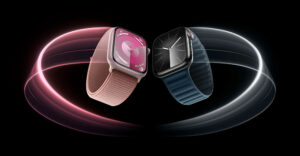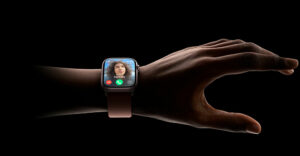
Ask the Internet.
That’s the pitch in HTC’s TV ads for its new flagship smartphone, the HTC One M8. It’s a pitch that hopes to acquire by word of mouth what HTC was unable to get for its predecessor: consumer mindshare.
“The challenge for any vendor outside of Samsung and Apple in the North American market is to get on the radar screen,” Gartner Research Vice President for Mobility Van L. Baker told TechNewsWorld.
“HTC did that once in the past, but faded rapidly, which points to the challenges of staying on top of the market if you’re not a Samsung or Apple,” he observed.
“The HTC One is a good product, but it isn’t getting any significant share,” he added. “That shows how tough it is to rise above the noise level in the market.”
Not for Everyone
In its TV ads for the M8, HTC is emphasizing the distinctiveness of the model.
“At HTC, they don’t make phones for everyone,” says a black-clad pitchman with an English accent, “just those who demand more.” That attitude is evident in the M8.
The new smartphone, which will be offered in gray, silver or gold, is encased in aluminum — most other smartphones have plastic casings. In fact, HTC has increased the amount of metal surface in the M series from 70 percent to 90 percent. That makes the M8 heavier than its rivals, though — 5.6 ounces, compared to 5 ounces for the Samsung Galaxy S5 and 4 ounces for the iPhone 5s.
High industrial design standards are maintained in the latest model, too. For example, the M8 has a curved back that fits more comfortably in the hand than a flat surface.
“Just the look and feel — how it feels in the hand — is far advanced from some of the Android devices out there,” Chris Jones, vice president and principal analyst with Canalys, told TechNewsWorld.
The M8 has a larger screen than its predecessor the M7 — 5 inches compared to 4.7 inches — but the same resolution as the M7 — 1080 x 1920 pixels — which is finer than the iPhone (1136 x 640) but not as fine as the Galaxy S5 (1921 x 1080).
Although the M8’s display at 441 ppi isn’t as dense as the M7’s, it’s still denser than the Samsung (431 ppi) and Apple (326 ppi) models.
Camera Tricks
With the M8, HTV has boosted the unit’s front-facing camera to 5 megapixels.
“That’s in recognition of the growing importance of the selfie,” Ross Rubin, principal analyst with Reticle Research, told TechNewsWorld.
At the back of the M8, there’s a smart LED flash that’s designed to avoid “hot spots” in flash pictures. There are also two cameras — one to capture depth-of-field information for a shot — and a 4.1-MP main shooter. The depth-of-field camera allows shutterbugs to perform some photographic tricks after taking a shot, such as moving the focal point in a scene, similar to what can be done with a Lytro light field camera.
While other smartphone makers have chosen to go with 5-MP or greater rear-facing cameras, HTC has chosen to trade fewer pixels for bigger pixels.
“It’s fully competitve with other phones,” independent mobile analyst Michael Morgan told TechNewsWorld. “The sensor is bigger. With a bigger sensor, you have better light sensitivity.”
For users who like to pump up the volume on their phones, HTC has boosted the output from the M8’s BoomSound speakers 25 percent.
As Samsung did with its S5, HTC has added an extreme power feature to the M8 to increase the battery life of the unit as it reaches the end of a charge. For example, entering extreme power-saving mode with 20 percent power left on the battery will extend the life to 60 hours of standby time; at 10 percent, 30 hours; and at 5 percent, 15 hours.
Hardware Hard to Beat
Some useful gesture support has been added to the M8 by HTC. For instance, double-tapping the phone will turn it on, and if you look at the caller ID of an incoming call on the display, you can raise the phone to your ear and answer the call without any taps or other fuss.
The M8, which runs on Android KitKat 4.4.2, has 2 GB of RAM and an optional 16 GB or 32 GB of onboard storage. It also has a new microSD slot that can add up to 128 GB of storage to the device.
Plenty of processing muscle is provided to the M8 through its Qualcomm SnapDragon 801 quad core processor with each core running at 2.3 GHz.
As with the M7, the M8 is starting to garner good notices from analysts and reviewers, but it remains to be seen if the word-of-mouth campaign it’s encouraging in its marketing for the phone will help it escape the fate of its predecessor.
“It is up against some formidable competitors; however, from a device standpoint, the new HTC One is hard to beat,” observed Canalys’s Jones.
“HTC must create the demand for the device through excellent marketing,” he said, “and then retail staff must be able to demonstrate its key features.”





















































